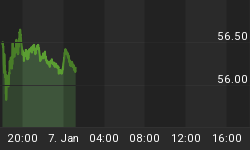Negative/Bearish Divergence
Yesterday, we covered an analysis about a potentially bullish signal in market breadth. A common form of feedback was:
What about the divergence between market breadth and the S&P 500...doesn't that look like October 2007?
The present day divergence is explained in the chart below.

A Showstopper For Bulls?
In this article, we are attempting to answer a simple question:
Is it possible for a bull market to continue after this divergence appears?
Four Historical Examples
In a very unscientific screen, we quickly found the four cases below with similar "bearish" divergences:




Did Stocks Continue To Rise?
In these anecdotal cases, the divergence between market breadth and price did not help predict the end of a bull market. The table below shows the dates the divergences appeared in 1995, 1998, 2004, and 2006. The right side of the table shows how much further the market carried before the bull market morphed into a bear market.

Therefore, the answer to our question is:
Yes, it is possible for a bull market to continue for quite some time after a negative breadth divergence similar to the one in place now.
Divergences And The Weight Of The Evidence
Is the current divergence irrelevant? No, it has meaning, but it is one of many inputs to consider. Since the weight of the evidence has supported the bullish case over the last four weeks, that takes precedence over the potentially bearish divergence. Could the divergence be "right" and the market "wrong"? Yes, but (a) that is a lower probability outcome and (b) the rest of the evidence will shift if the divergence proves to be helpful, something that has not occurred yet. A tweet from earlier today sums up our approach to all divergences (bullish or bearish).

If the weight of the evidence begins to shift, we are happy to adjust as needed. For now, we continue to hold an equity-heavy (SPY) portfolio, with a relatively small and deflation-friendly stake in bonds (TLT).















